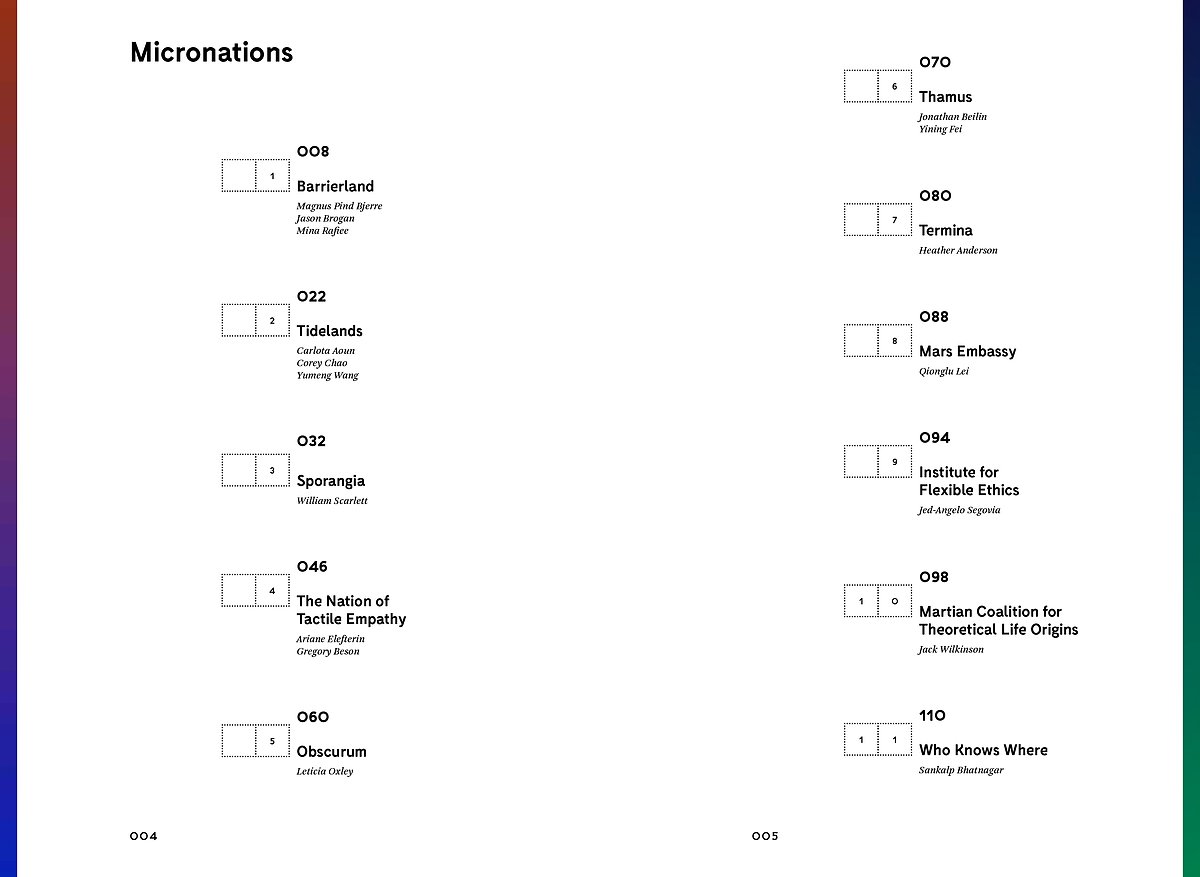First Design Biennale of Experimental Micronations

In Atlas of Countries that Don’t Exist: A Compendium of Fifty Unrecognized and Largely Unnoticed States, geographer Nick Middleton suggests that countries as we know them are not the only legitimate basis for ordering the planet. Atlantium for example is a non- territorial community of globally distributed citizens, and The Kingdoms of Elgaland-Vargaland (KREV), consists of all territories including geographical, mental (e.g., dream states), and digital, making it the largest realm on Earth. And then there’s Antarctica, a landmass used only by scientists, tourists, and penguins.
In this class, students from a range of programs across The New School including Design & Technology, Anthropology, and Design Studies, at BFA, MFA, MA, and PhD levels, developed design responses to the idea of a micronation as a platform for exploring new perspectives on citizenship, nationality, the sovereign state, and territory. Their designs are not concrete proposals, but glimpses into imagined worlds which hint at alternative modes of being, new forms of social relations, de-centering human interests, and uses of emerging technology informed by alternative beliefs, values, hopes, fears, and dreams to those driving its current development. Most are neither dystopian nor utopian but instead, embody dilemmas and highlight possible tradeoffs.
Whole new worlds are imagined by writers, film makers, and artists. Could we borrow this approach to develop projects which provoke thought and further imagining about the kind of world(s) we wish to live in rather than communicating a vision of how things will or should be?
This booklet is a kind of catalogue for a fictional First Design Biennale of Experimental Micronations where design is used not to promote new technologies or attract new clients, roles familiar to visitors of many contemporary design festivals, but instead, to suggest a multiplicity of alternative worldviews.